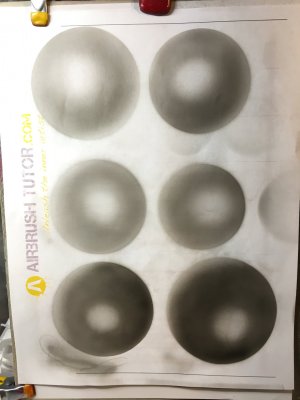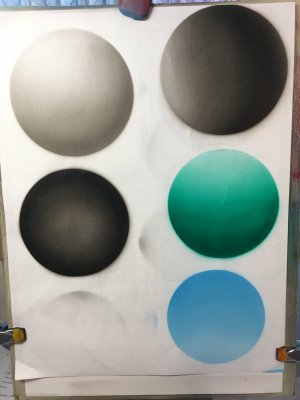D
dmshanks
Guest
Pictured are some spheres I attempted to shade realistically. The bottom examples are pretty awful, but I feel I improved (subject to individual opinion) as I moved up the paper. The top left seems like the track I should be rolling down, but would love some experienced advice on what to do to improve the shading/realism/3D effect. I was trying for some incident (incidental?) light on the right side, with the main light source striking the sphere just left and slightly above center. It's cold & snowy here in Utah today. I've been mostly holed up, aside from a trip to WinCo for some groceries. I've had time to play with the paint and airbrush for many hours, although I must fit in a trip to the gym at some point so I don't feel like a total veg today. Thanks for the help!!!


